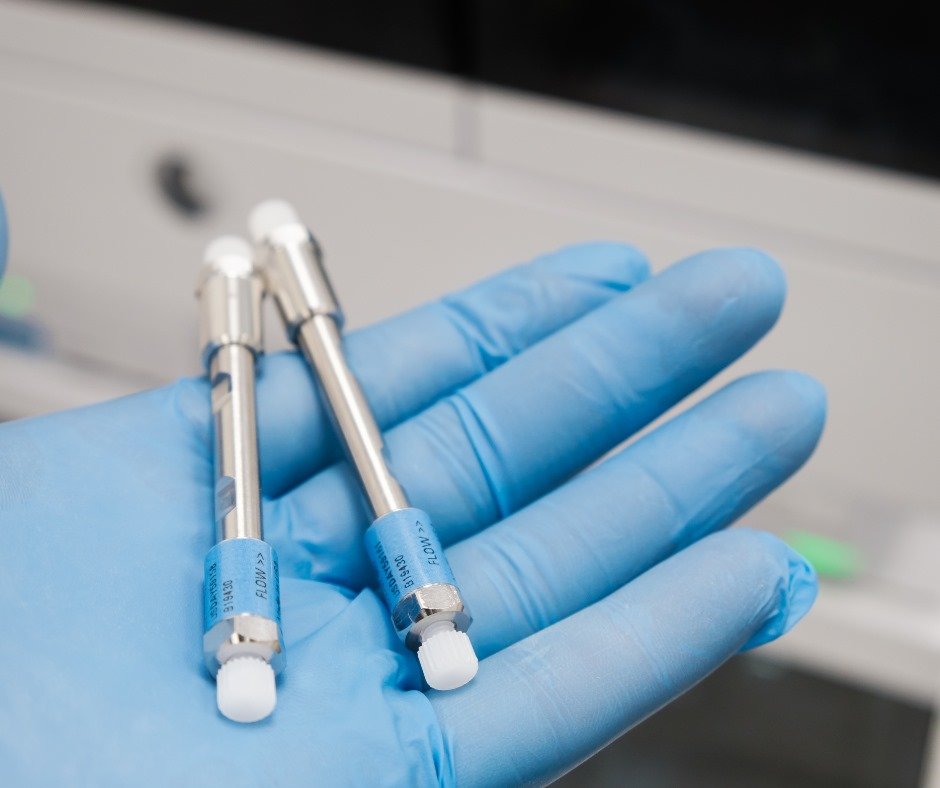Difference Between C8 and C18 Columns in HPLC

Difference Between C8 and C18 Columns in HPLC
| Parameter | C8 Column | C18 Column |
|---|---|---|
| Full Name | Octyl column | Octadecyl column |
| Carbon Chain Length | 8 carbons | 18 carbons |
| Stationary Phase Polarity | Less non-polar (moderately hydrophobic) | More non-polar (highly hydrophobic) |
| Hydrophobic Interaction | Weaker hydrophobic interaction | Stronger hydrophobic interaction |
| Retention Time | Shorter (compounds elute faster) | Longer (compounds retained longer) |
| Suitable For | Less hydrophobic or moderately polar compounds | Highly hydrophobic compounds |
| Typical Applications | Faster analysis, compounds with lower logP, polar or mid-polar molecules | High logP compounds, fatty acids, lipophilic drugs |
| Elution Strength Requirement | Requires weaker mobile phase to elute compounds | Requires stronger mobile phase to elute compounds |
| Backpressure | Slightly lower due to less retention | Slightly higher due to more retention |
| Usage in Method Development | Good for speeding up runs or when high retention is not desired | Preferred for higher resolution and separation of non-polar analytes |
Key Takeaways
-
C18: Stronger retention, better for hydrophobic analytes, widely used as the standard reversed-phase column.
-
C8: Shorter analysis time, useful when compounds elute too slowly on C18.
-
Choice depends on analyte polarity, required resolution, and run time goals.

